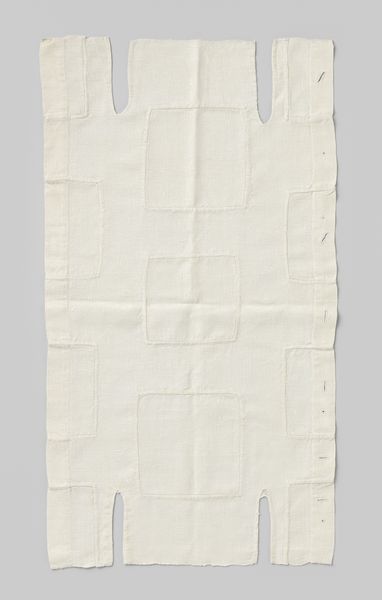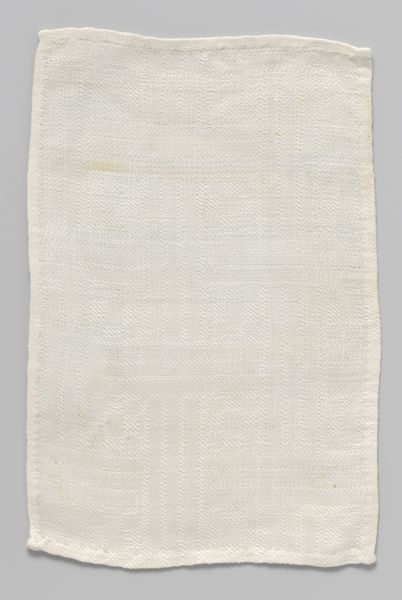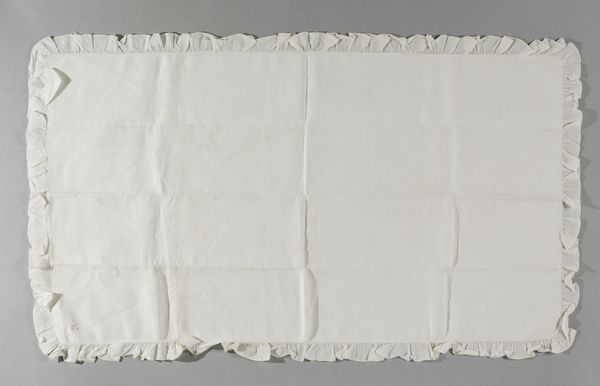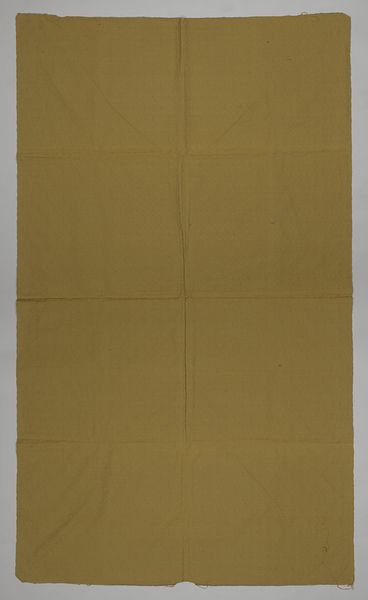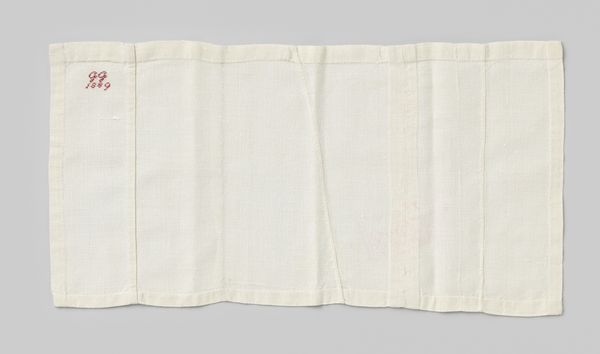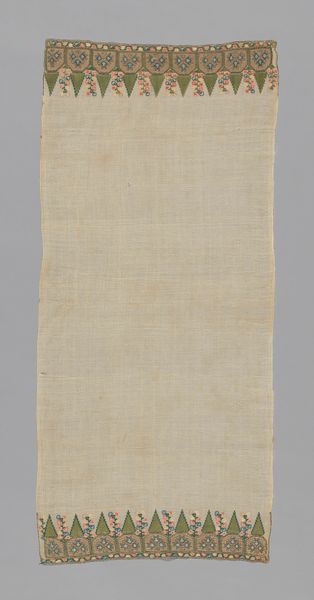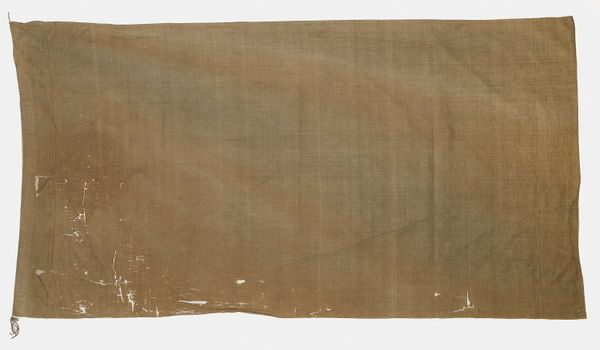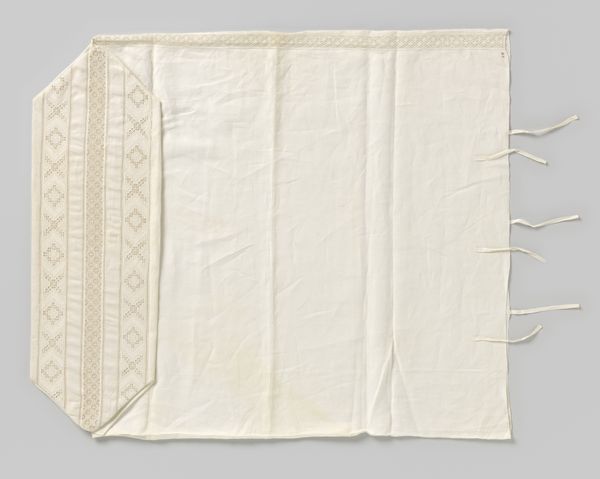
Naailap van linnen en katoen met zes knoopjes, vier hoeklussen, een haak en oog en stikwerk met blauw garen; gemerkt: 'G. Glas 1 april 1894 1 juli' c. 1894
0:00
0:00
mixed-media, textile, cotton
#
mixed-media
#
textile
#
cotton
Dimensions: height 62 cm, width 35 cm
Copyright: Rijks Museum: Open Domain
This is a linen and cotton nappy, or "Naailap," crafted by G. Glas on April 1st, 1894, and completed on July 1st. The symbols here are simple: the six buttons, the four corner loops, and the blue stitching. These aren't grand allegories but humble markers of human life. Buttons, across cultures, symbolize connection, closure, and beginning. Here, they secure the garment, much like maternal care binds a child. Blue, often associated with the Virgin Mary, can represent purity and tranquility. Consider how the act of sewing, the stitching itself, has appeared throughout history—from ancient tapestries to modern quilts. Each stitch carries intention, a personal mark, and a collective memory. The blue thread contrasts against the pale fabric, drawing attention to the labor embedded in this simple textile. This nappy is more than cloth; it’s a vessel of memory, silently echoing the universal experience of nurturing. It is a testament to the cyclical nature of care, reminding us of the continuous, timeless act of human connection.
Comments
No comments
Be the first to comment and join the conversation on the ultimate creative platform.
